Now and again you might come across an issue where for some reason you have lots of transaction logs. These logs are normally flushed when a successful backup has run of the exchange databases. So if you have lots of logs the first thing to look at is the backups. The following steps will help you quickly flush the existing logs. However please be aware that these logs would be needed if your database got corrupted and you needed to restore the database from backup and then replay the logs. Without these logs there would be data loss in the event of a disaster.
The logs can quickly accumulate if a backup doesn’t run for a few days. If the drives fill up then your databases will dismount.
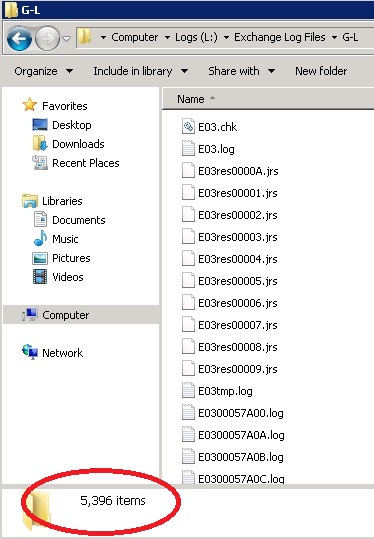
You can easily flush the logs by turning on circular logging for a database and then dismounting and remounting it.
Open up the Exchange Management Console and then go into Organization configuration, then Mailbox. On the database management tab you will see a list of all the mailbox databases present.
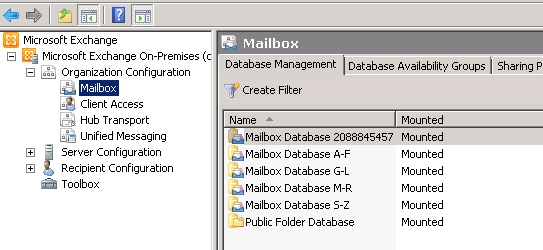
For each database in turn right click on it, then click properties.
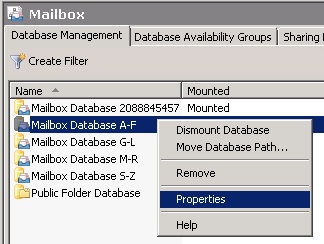
Click on the Maintenance tab, then down the bottom click Enable Circular Logging.
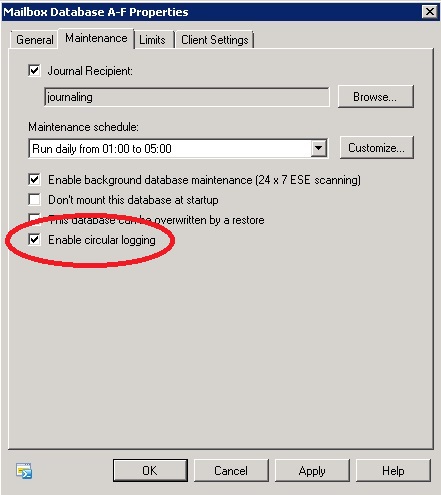
You will receive a warning message about the changes will not be applied until the database is remounted. Click ok.
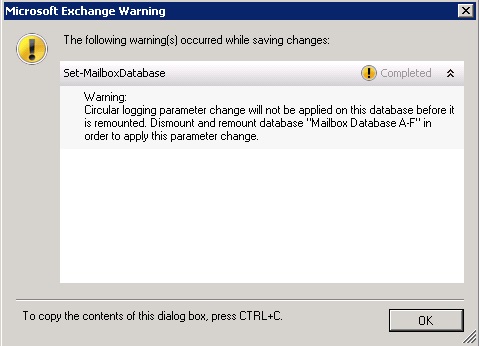
Right click on the same database and click Dismount Database.
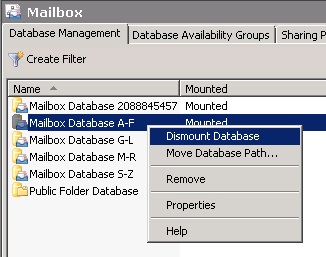
Click yes to confirm you want to dismount the database.

Once dismounted, we now need to mount the same database. Right click on the database and click Mount Database.
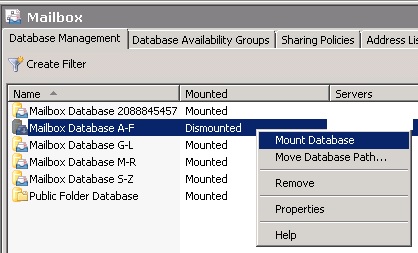
If you watch the log drive location for that database you should see after a few minutes that the logs start to get flushed.
I would advise that once you have carried out all the steps above for each database that you repeat them again but disable circular logging, then dismount and remount. This will allow the logs to accumulate again.